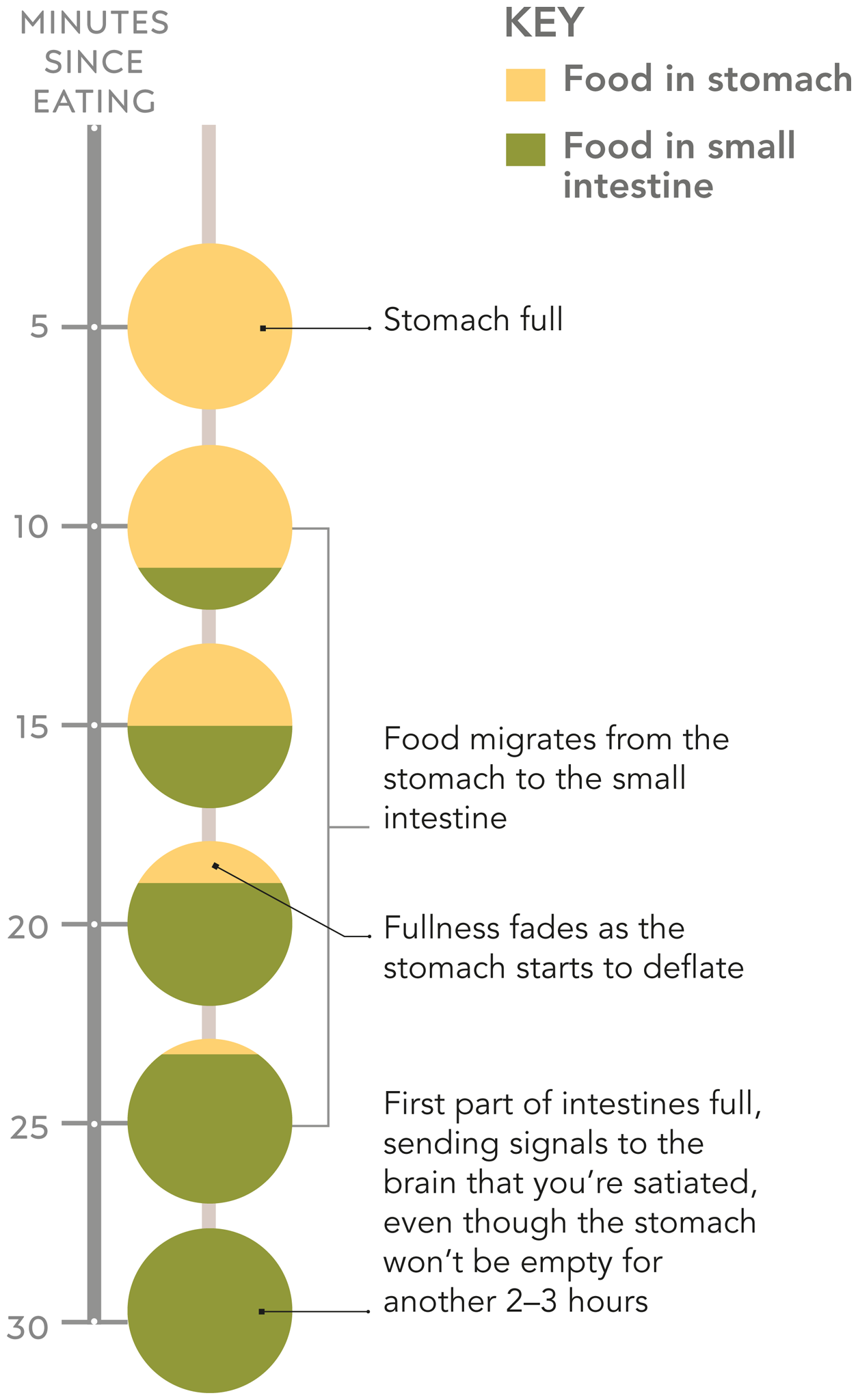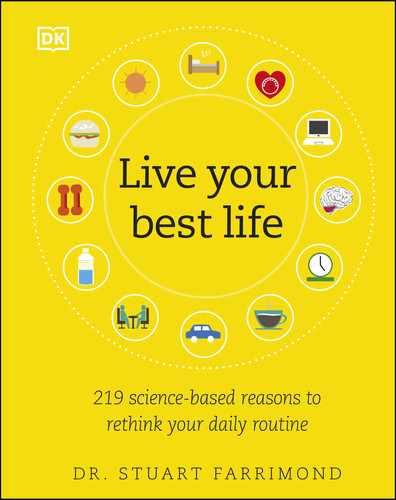Is It Really Better to Eat Slowly?
Your mother was right. There’s a time lag between when you finish a meal and when you feel full, and if you go back for more during this window, you may end up eating too much.
There are two signs that you are “full.” The immediate feeling comes from your stomach—you’ll start to feel bloated. As it fills, nerve receptors send out “full” signals to the brain. This is short-lived, though, since the stomach starts to deflate after about 5 minutes, and the “full” signals relent.
Liquids rush almost immediately through to the intestines. It’s only when the second sign of fullness comes, as proteins, fats, and carbohydrates (including sugar) start to trickle into the small intestine, that we begin to feel properly fed. Incredibly, there are taste receptors in your intestines—just like those on the tongue!—and the gut brain starts to send out messages to the upstairs brain to dial down appetite when it gets this second taste.
Because of the delay between eating and the food being tasted by the gut, gobbling food quickly makes it easy to overeat. It’s wise to wait a while to let your food settle before going for second helpings.

n Double-tap image to read the labels
delayed reaction
This timeline shows the filling of the intestine after a meal. After you’ve finished, try not to eat more over the next 20–30 minutes.
